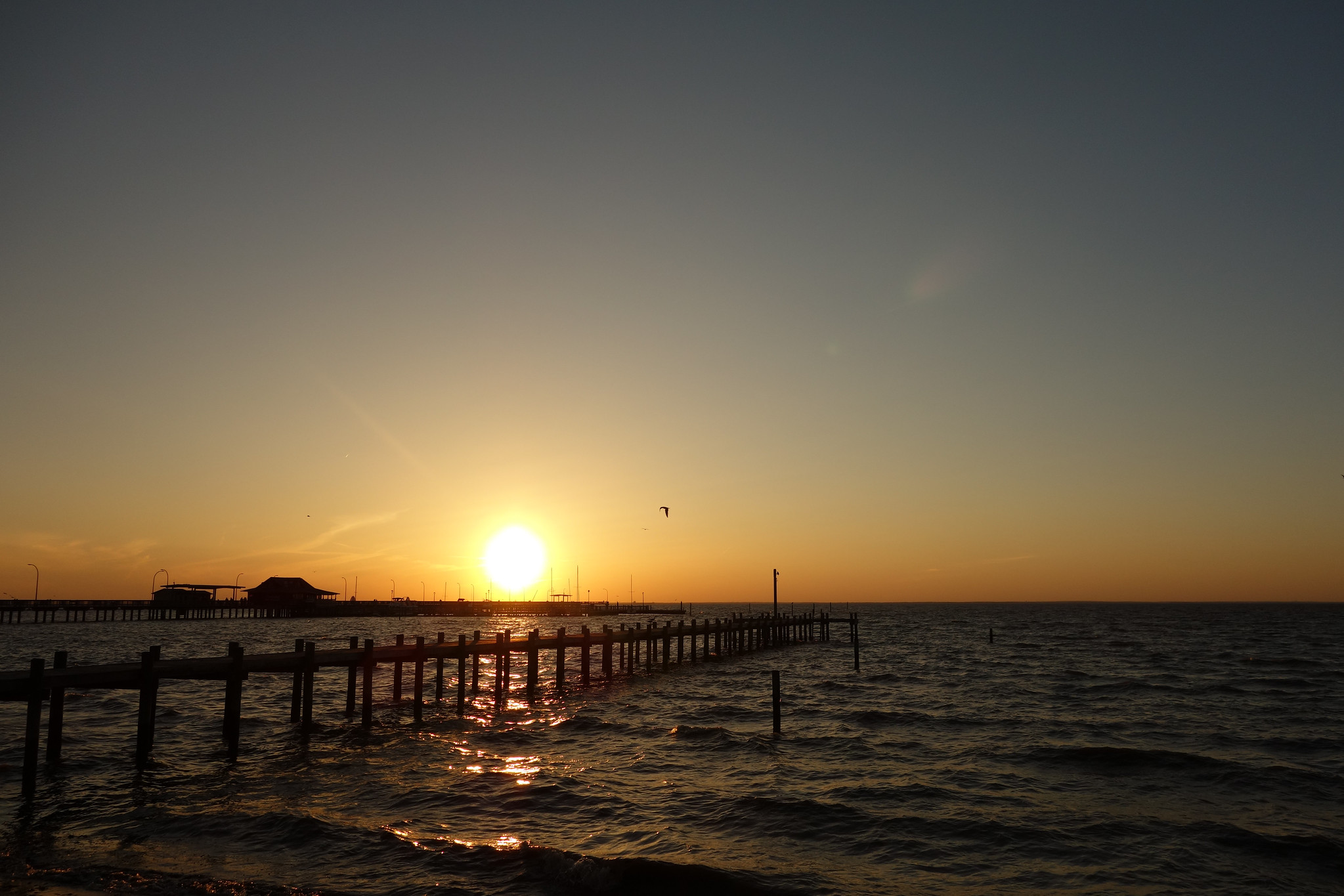
Naples to New Orleans
[Note: This is a graphically heavy page, and is best viewed on a large screen. As such, it may take a few moments to fully load.]
As I hit the road again and I listened to a bit of local radio. As with newspapers, I try to listen to local radio to catch a flavour of it as much as possible. But so much of it is completely unlistenable that by and large I’d find myself seeking out the either the local public radio service or just listening to podcasts via Bluetooth on the car’s stereo.
Given that I was heavily reliant on Google Maps for directions, listening to podcasts was actually helpful because Google Maps’ voice would interrupt them with turning directions. It was less easy to get this to work if I listened to the radio. I certainly wasn’t going to pay extra for the GPS that the rental company offered.
Leaving Naples, I was listening to some commercial radio, and what instantly became apparent is the extent to which the whole American commercial radio industry is propped up via automotive advertising. There are simply so many of car ads! Buying a new car would seem to be an essential purchase; replacing it with the latest model every couple of years or so.
What’s more stations don’t seem to offer category exclusivity to one advertiser within a break either, so you might hear rival car ads one after the other.
The best ad by far though, which I heard a lot, was for a local Kia dealer. Now car dealerships in the US rely heavily on hitting sales targets achieved through volumes (There’s a terrific edition of This American Life all about car dealerships). So the sale of a single car can be done at cost price by the dealer because if they achieve enough volume, they get kick-backs from the manufacturer for achieving those sales, and those can actually drive overall dealership profits.
This particular local Kia dealership was offering purchasers no less than a cruise if you bought your Kia at his branch. This was a typical dealer-voiced “shouty” advert, with the proprietor himself voicing the ad. And it wasn’t just some kind of generic free cruise ticket. No, it seemed that you’d be on the very same trip as all your fellow Kia drivers.
But what I found truly astonishing was the fact that he referred to those who worked at another South Florida Kia dealership as “clowns!” So you should definitely buy your Kia with him and not from them.
Extraordinary! The idea that someone would run an ad for what is effectively their branch and put-down a sister branch in the same chain. Yes, I know that dealerships tend to be owned and operated independently, but I still found the whole thing remarkable.
It was suggested to me that the Edison and Ford Winter Estates in Fort Myers was worth stopping off at. These are basically the wintter homes of Thomas Edison and Henry Ford. The two inventors and moguls had neighbouring homes on the coast where they would escape the snow and chill of the north in the somewhat sunnier climes of the Gulf coast. Their two homes really were right next door to one another, and they’ve been turned into tourist exhibit, with both the houses and gardens really well maintained in their original style. From a 21st century perspective they’re actually relatively modest, but they’re right on the coast affording some lovely views.
[justified_image_grid preset=4 lightbox=photoswipe mobile_lightbox=photoswipe flickr_user=32306155@N00 flickr_photoset=72157664290076051]There was a chunky leg of my drive to come now, and I wanted to try to get to Tallahassee that evening, a drive of around 385 miles – getting on for six hours of driving. For me, this is a long distance. But I’d go the fastest route, up the I75 or “75” as Americans would have it.
Interstates tend to be big and wide, often with four or more lanes. But then drivers seem to choose whichever lanes they like and stick in them regardless of others. In the UK we obviously have had the scourge of the “middle lane driver” – but they’re perhaps not the problem that they once were. At least mostly people understand that you’re supposed to stick to the nearside lane, using outer lanes only if you need to overtake.
In the US it seems that undertaking is perfectly respectable. You really have to keep your wits about you because people can come from all directions.
Then there’s the tailgating. Drivers simply don’t leave enough space, and are constantly getting far too close to the car in front. And there’s really no reason for it on an Interstate, where there is acres of space.
I was left feeling that Americans are much worse drivers than most Europeans. A harsh comment perhaps, but the evidence is everywhere. You’d see cars pulled over on the side of the road repeatedly with damaged bodywork or worse. If I drive 200m down the M4, about the worst I can expect to see is a car pulled onto the hard-shoulder because it’s had a mechanical problem. In Florida, I would expect to see at least 2-3 “wrecks” in a similar distance.
Maybe it was just my bad experience, but talking to others, it certainly feels that driving is pretty poor throughout the US.
Then there are vast numbers of people playing with their phones constantly in the car. Even today, not every US State has outlawed drivers from texting! An extraordinary state of affairs. Later in Los Angeles I saw someone rear-end a Range Rover (not a cheap car to crash into) at about 20mph simply because they were looking at their phone.
As a result of all this, you see the Highway Patrol everywhere – cars parked in special spots with radar guns at the ready to catch offenders.
As a tourist, I was acutely aware of the perils of being stopped by the police. American police can use anti-drugs claims to seize sizeable amounts of cash that a tourist might legitimately be carrying. Reclaiming that money can be long and laborious, and it seems clear that small towns use this as a source of income. It may sound incredible and unbelievable – something you might expect in the developing world, and not somewhere like the US, but the evidence is clear. The Canadian government actually tells its citizens not to carry too much cash because of this.
Either way, while I know that a British accent can get you out of some scrapes, I wasn’t keen to try my hand, and was sticking to the speed limit. And unlike many of my fellow drivers, I was leaving plenty of room between me and the car in front.
But that trip did teach me one thing – I worked out how cruise control works!
Although I drive, I don’t have a car, and have rarely driven anything too new. Here in the US, I had rented a reasonably specced car on the basis that I was going to be using it for a lot of mileage, and that anyway, the price differential for going up a few categories was pretty marginal.
That meant that my Dodge had cruise control. It took me a while to work it out, but it was such a great thing when I got it working. Just set the speed, and the car does the rest. Yes – I’m coming to this very late! If you’re driving several hundred miles along a mostly straight road, then that’s a massive boon, although it did leave me worrying that just steering was not enough to do. As it was, this was an automatic so one of my feet had nothing to do the entire trip. Nor did I have to play with a gear lever. Now basically I just had to steer. And these roads were straight – often for miles at a time. Perhaps that explained some of the wrecked cars I’d seen? Drivers falling asleep at the wheel perhaps.
As I entered the last 100 miles or so, the rain started – quite torrential rain. I was leaving even bigger spaces between me and the car in front, but others seemed to just see them as gaps to hop into. I’d just drop back some more.
Tallahassee is the state capital of Florida, but to be honest, for me it was just an overnight stop. It had long got dark when I drove into the carpark of the Staybridge Suites, positioned just off the Interstate.
I checked in, and then went out in search of food. But it was clear I was a long way from any town centre, and so my choices were limited to fast food. Back in the hotel the “suite” was actually very comfortable, and I could see how someone on business in Tallahassee might choose to stay here, with a bit more space than usual as well as a kitchen area and work desk.
What’s more, the TV had a good selection of channels including all the NBC Sports channels. That meant that first thing the following morning I was able to catch a little of Manchester Utd v Aston Villa before I got on the road.
More immediately, I found that the hotel had a laundrette, and so even though I still had fresh clothes, I took advantage of it and did some washing to keep ahead of myself.

29 March
Another long drive along the southern Gulf coast of the US was now ahead of me. I’d not really allowed a great deal of time to go exploring in this area, so I stuck to the Interstate rather exploring the perhaps more scenic sights along the actual coast itself.
I was looking for somewhere to break my trip, and Mobile, Alabama seemed the obvious spot. I could make it by about the middle of the day and use the afternoon for exploring. But the problem was that there simply didn’t seem to be anything especially interesting to do in Mobile. I was really finding Tripadvisor coming into its own for this journey.
Now Tripadvisor can leave a holidaymaker in torment. If you’ve ever planned a summer holiday with Tripadvisor to “assist,” you’ll know that it goes something like this. You perhaps find a good deal on a hotel somewhere and decide to check it out on Tripadvisor. It seems to rate reasonably, but you dig into the reviews to see what people are actually saying. The top reviews seem good, but then there’s a terrible review from someone who had just an awful room and couldn’t get a night’s sleep for whatever reason. You immediately discount those good reviews and make a note to avoid this rat-infested hellhole. So you start looking for somewhere else, and then go through the process again.
Essentially no matter how good the place is, there’s always someone who’s had a terrible experience, and then taken to the internet to express their views.
Since I was staying in different places each night – almost exclusively establishments that showed up on the big hotel aggregator websites – I couldn’t be too choosy. But Mobile wasn’t filling me with much joy.
More and more, I was being pointed towards a small town called Fairhope which was on the other side of Mobile Bay – the vast inlet off the Gulf of Mexico. I found some accommodation which I booked online and headed there instead.
Fairhope is simply a gorgeous small town. It’s picture postcard perfect, sitting on a hill overlooking the bay. Way off in the distance on the other side of the water, you can just make out the industry of Mobile. But here, you seem to be a world away as you drop down to the coast where a pier stretches out into the water.
I found a nice bar to get some food and then explored the town which definitely had an artistic vibe to it. There was a lovely independent bookshop where I had to pick up a book or two (although I wasn’t getting through as much reading as I’d hoped on this trip), and there were galleries and plenty of small independent shops filled with interesting things.
As the sun set later in the evening, Fairhope’s residents get a beautiful sunset across the bay. Really delightful.
I must admit that I did look in the window of a real estate office. Wow! If there was a job to be had locally, this would be an amazing and very affordable place to live.
[justified_image_grid preset=4 lightbox=photoswipe mobile_lightbox=photoswipe flickr_user=32306155@N00 flickr_photoset=72157662117613763]
30 March
I still had some miles to make up, but the end of my part one of my journey was in sight, with New Orleans a relatively modest 160 miles to drive down the coast.
As I headed towards the city, I found myself on the “Stephen E Ambrose Memorial Highway.” This is a section of Interstate 10, and Ambrose, the writer of Band of Brothers as well as many other popular history books, lived locally in Mississippi. The State wanted to honour him after his death in 2002, and naming a stretch of the highway was the result. I’ll be honest, and say that I would personally have hoped for something a little more inspiring than a stretch of road. A statue, or a small park perhaps. Even a park bench would be nicer.
I realise that Britain too has a rich history of naming bypasses and roundabouts after people, but I’m afraid it just doesn’t feel that special.
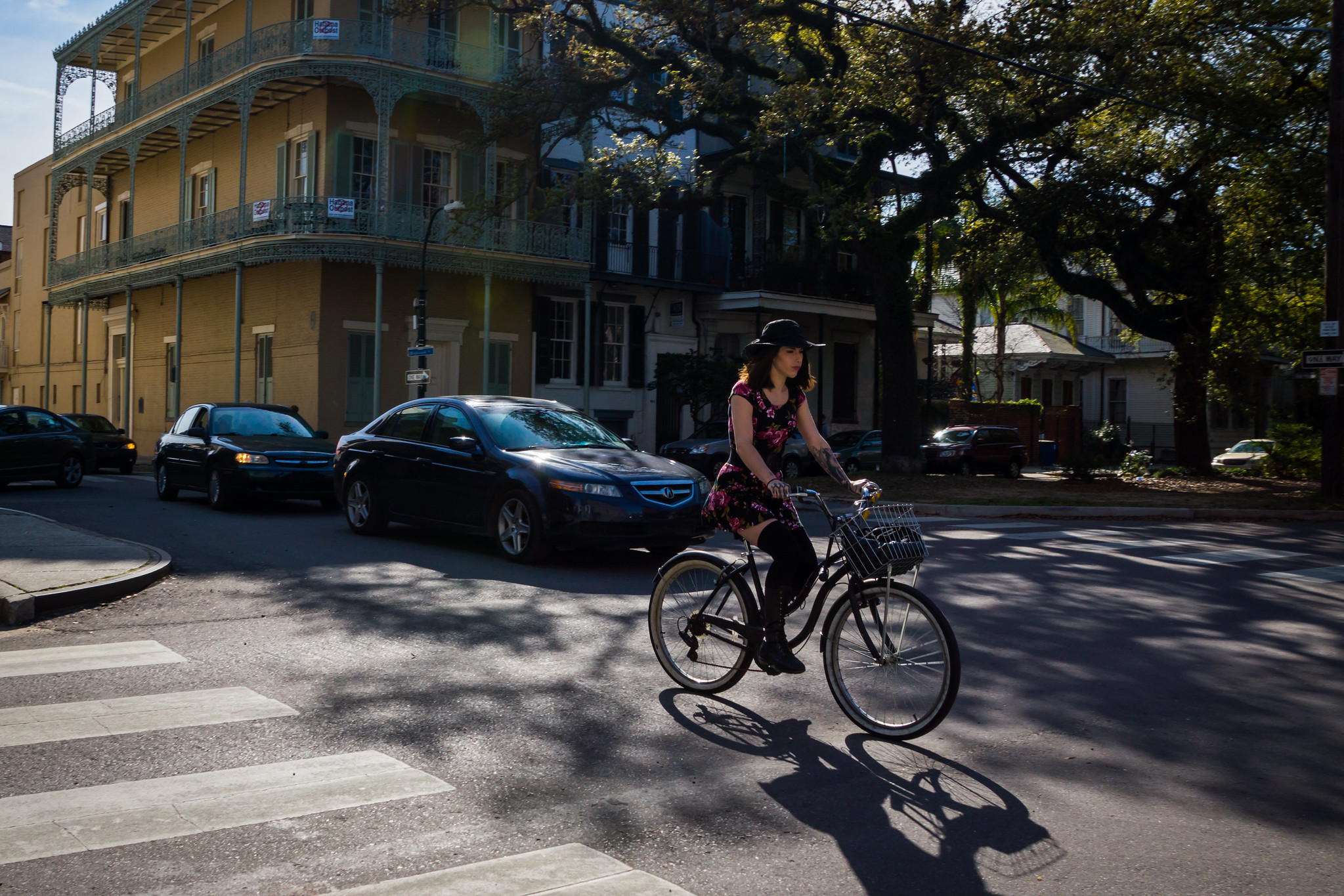
The route to New Orleans ends along the southern end of Lake Pontchartrain, and you seem very close to the water wherever you venture in this area. Indeed a separate causeway runs right across the middle of the lake too.
Then it was into New Orleans itself. I’d splashed out for hotel right in the middle of the French Quarter, the Royal Orleans. The hotel is built very much in the style of the surrounding area, although it was actually only erected in 1960.
What was most worrying for me was that because it was slap bang in the heart of the tourist centre of the city, people were drifting off pavements and sidewalks wherever I went. At one point I drove down Bourbon Street, the epicentre of the area, tourists slurping cocktails from large plastic glasses all around me. It was only about 2pm in the afternoon.
I had to circle the hotel a couple of times to find the parking garage where an attendant took my key and drove my car away. Now I realise that this is a pretty common way of doing things in the US, but I was still getting used to it. It was my name on the car rental agreement after all!
I’d got a deal on my room, so I ended up with a courtyard view rather than a more exciting outwards view of the city. But I wasn’t bothered and in any case, wasn’t planning on spending long in my room. This was a city that needed exploring both day and night.
But first things first – and it was up to the rooftop bar and swimming pool to get a drink and admire the view.

It’d been nearly ten years since Hurricane Katrina had hit the city, but I knew that it wasn’t the French Quarter that had suffered, as much as other much poorer areas. I was very sensitive to the fact that the population had still not really recovered from the tragedy, and that although tourists are very much welcome (the city is very much built for their benefit), they didn’t want gawping.
Outside the hotel we were in another world. Tourists milled around in the streets; bands busked in pedestrianised areas; and tourists drunk dubious looking cocktails and took photos.
Some areas were undoubtedly as seedy as a low-rent Mediterranean resort. Strip joints and sleazy bars selling drinks from containers that looked like they should have been serving slush puppies. Who knows what was really in them, and what kind of ultra-cheap alcohol was being used. Touts were on the streets plying their trade and trying to entice tourists inside these venues. It was all incredibly tacky.
Yet if you stepped just a couple of streets away, everything was much nicer and somewhat more authentic. Yes this was still tourist-central, but without the sleaze.
As I wandered around the city, it was clear that this was a city of many parts. there was a central street, Canal Street, that seems to divide the city, with a newer part of it including skyscrapers, over to the southwest. While towards the northeast, you suddenly reached residential areas.
Indeed what was clear was that the music scene was actually well away from the most tourist-trodden parts of the city. The area around Frenchman Street seemed to be the place to visit.
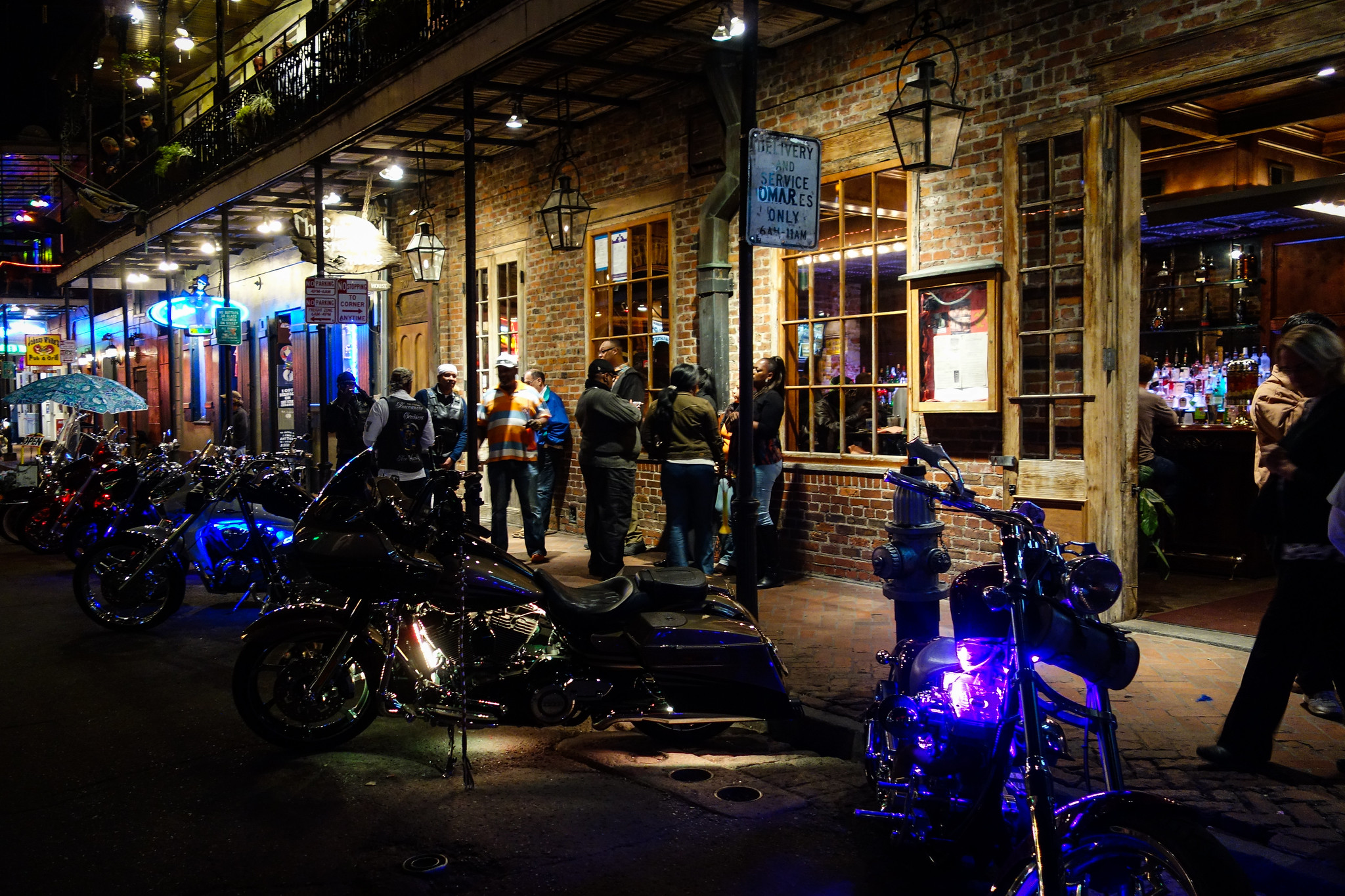
On the way into the city I’d been listening to WWOZ, the city’s jazz station to get myself in the mood. I walked past their studios, and into the Louisiana Music Factory – a substantial jazz record store where the radio station sold merchandise. I came away with a t-shirt and a couple of CDs.
I ended up spending a good part of the evening in a really friendly club called The Spotted Cat Music Club, where bands seemed to play one after the other. I had a good couple of hours or so watching them play, contributing to collections, and even picking up a CD.
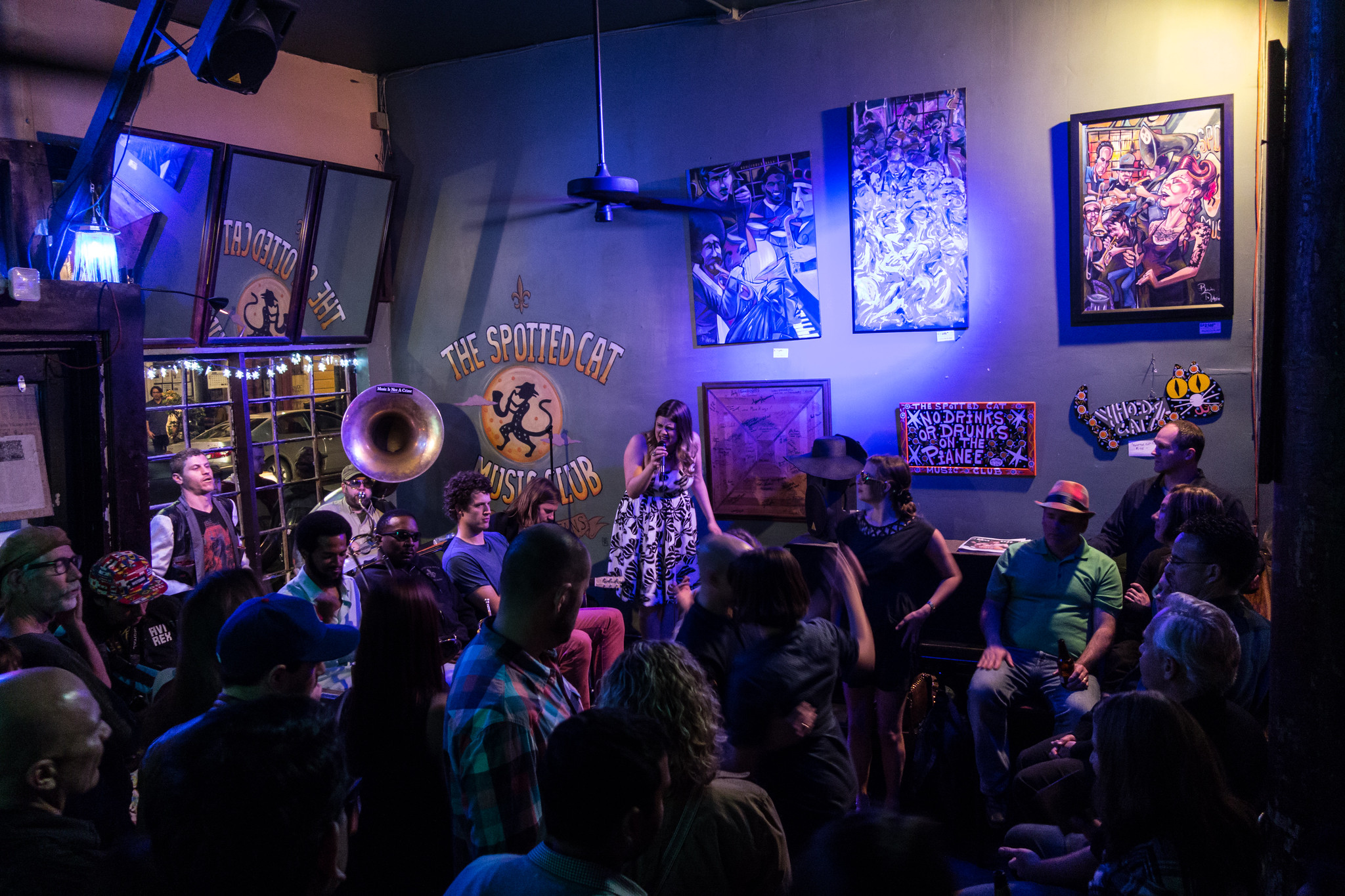
Out on the streets even as it was late, there was still music everywhere. On one street corner a group of musicians had gathered and were entertaining listeners across a street corner. They set out a cardboard box to collect dollar bills, and an enterprising local hawked cheap canned beer from a cooler.
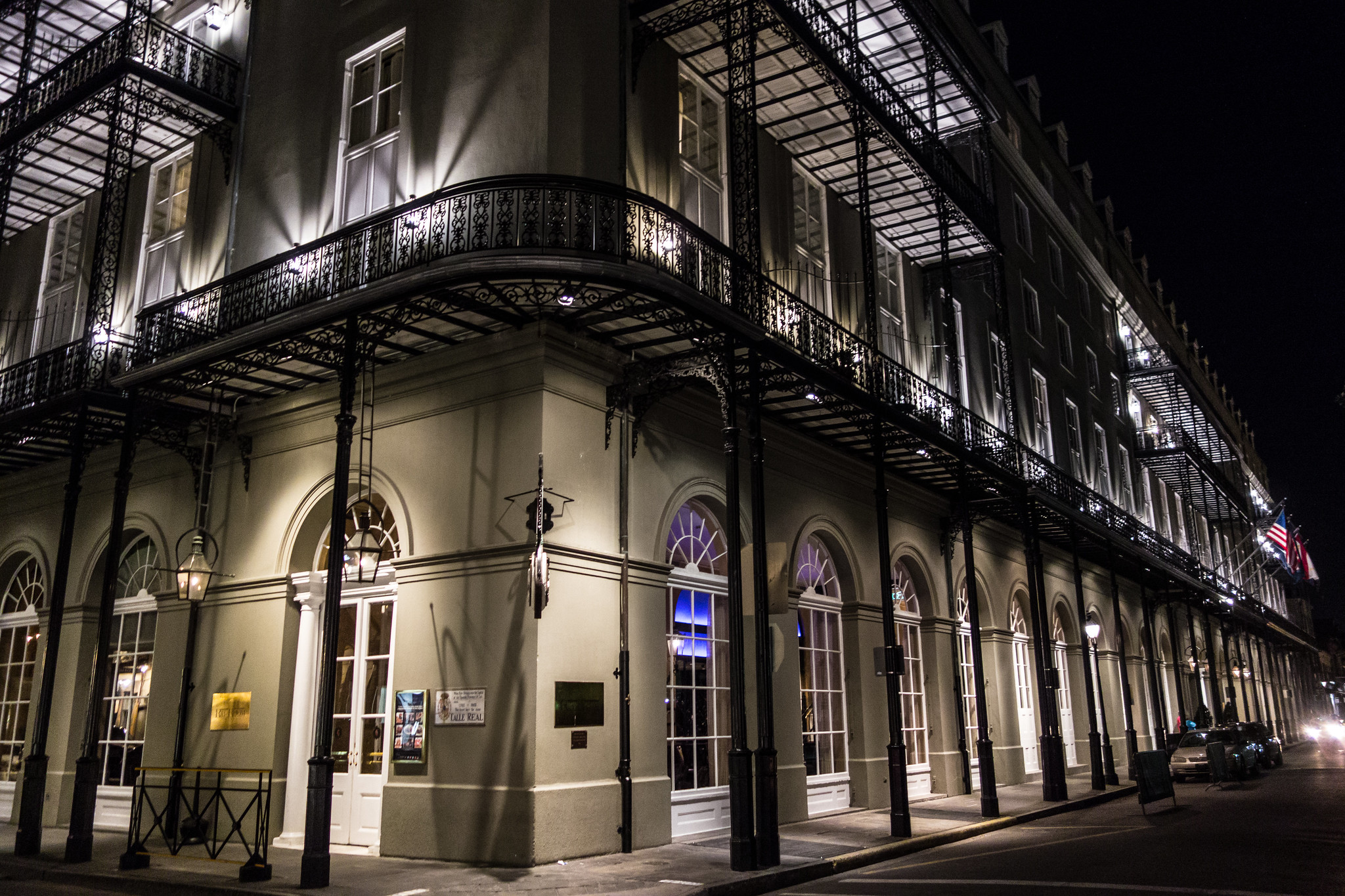
The next day saw me do more wandering around the city, this time looking for different parts of the city. Large posters advertised the upcoming annual Jazz Festival which I’d be missing. However there more more posters advertising the fact that Wrestlemania was also coming to the city.
I headed over to the massive National World War II museum – so large that it was actually spread across different sides of the street.
As much as anything I was escaping the hot conditions and entering a lovely air-conditioned environment, but the museum is really quite good. The exhibits are plentifold and they tell the story of the various theatres of war very well.
The big piece de resistance is Beyond All Boundaries, a “4D” theatre experience telling the story of the US in WWII and presented by Tom Hanks. It’s a really well produced piece and there’s an all-star cast of voice actors. The theatre is designed especially for the show and mixes film, real sets, lights and other elements in a smart way.
My only slight issue is that we only get the war from 1941 onwards. As we await entry to the theatre, a pre-show element effectively gets people up to speed with the war from 1939 to that point.
The rest of the museum is more traditional, but on a colossal scale, and it truly is well worth a visit.
I’d been keen to do a bicycle tour of New Orleans because I knew such things were possible, but I hadn’t planned far enough in advance and initially the company I spoke to was booked up. But then when a couple of other people also enquired they called me back saying that they’d put a small group on for us especially, and so we met at Confederacy of Cruisers’ shop on the wonderfully named Elysian Fields Avenue.
As the name would suggest, we’d be riding cruisers, but we were going to cover a few miles on our fairly bespoke tour that took in lots of areas including a little of the lower ninth ward that had been so damaged by Katrina and its aftermath.
It was a particular delight to cross “Desire,” the road A Streetcar Named Desire was named after, and we also looked at some of levees to see the where flooding had occurred and what had been done since.
Our host told us some fascinating stories about people who’d lived here in the past, and the way the city had been built. He also talked about some of newcomers – particularly trustafarians. New Orleans has a sizeable homeless community, and it seems that certain individuals like to come and live there for a few months as though they too were homeless, until they get bored, bo home to mummy and daddy, probably moving on to their Ivy League colleges.
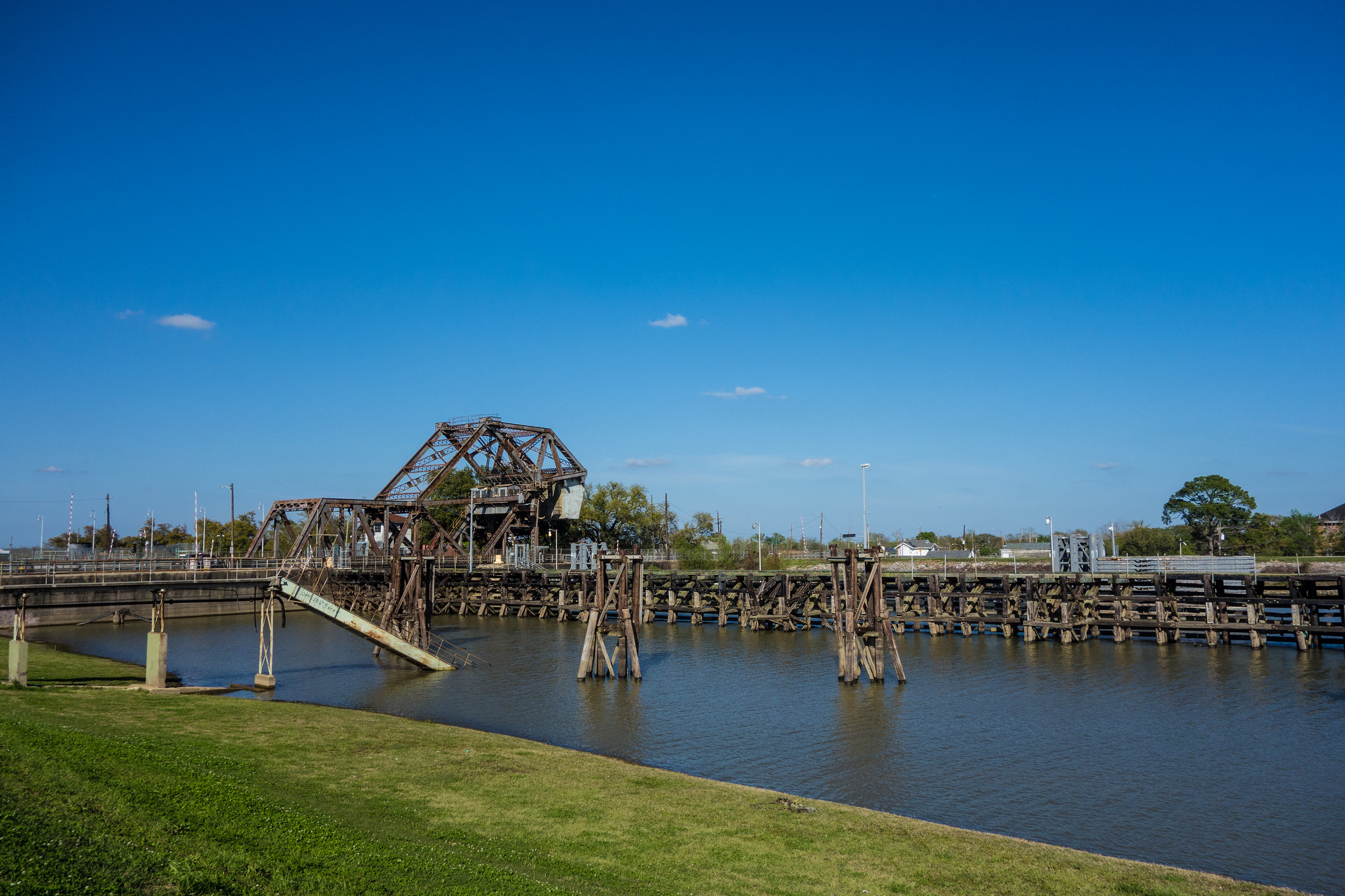
We ended up in a very cool bar that was a little off the regular tourist path, and where I noticed they had regular HBO Sundays – everyone coming in to watch the latest episode of True Detective or Game of Thrones. I wondered if that really worked as bars are noisy environments and I like to pay attention to these series. But no. It seems that everyone stays very quiet and watches properly, only afterwards enjoying discussing the latest episode. (Incidentally, I’ve since read of HBO clamping down on such bars – they see it as people getting out of paying for their own HBO subscription).
I met a friend of a friend the following morning for breakfast, before heading off to Louis Armstrong airport, dropping off my car, and discovering that my checked luggage was a bit over the limit. The assistant let me stuff things into my pockets to lighten the load and I was on my way to Los Angeles.
[justified_image_grid preset=4 lightbox=photoswipe mobile_lightbox=photoswipe flickr_user=32306155@N00 flickr_photoset=72157664290210061]Back to Part Two